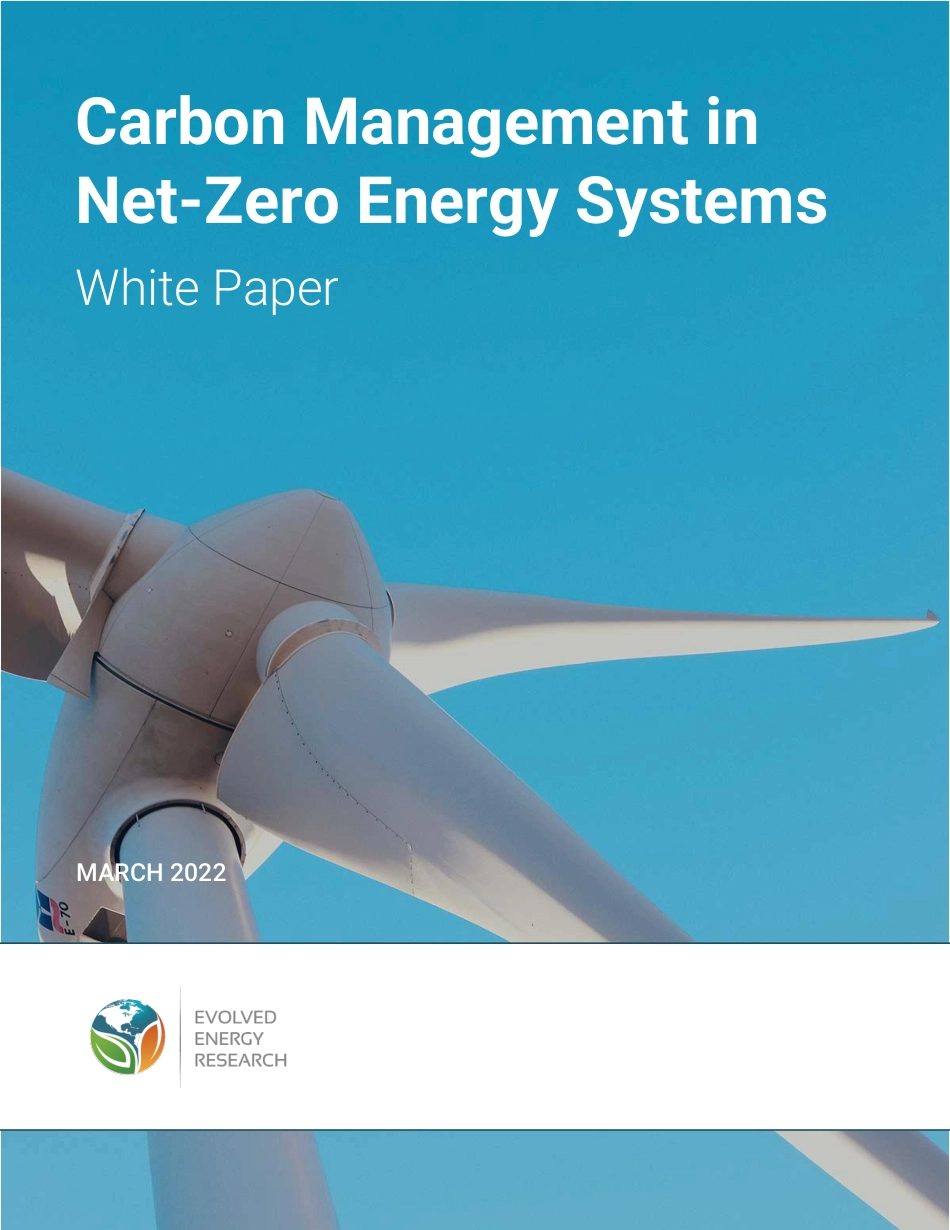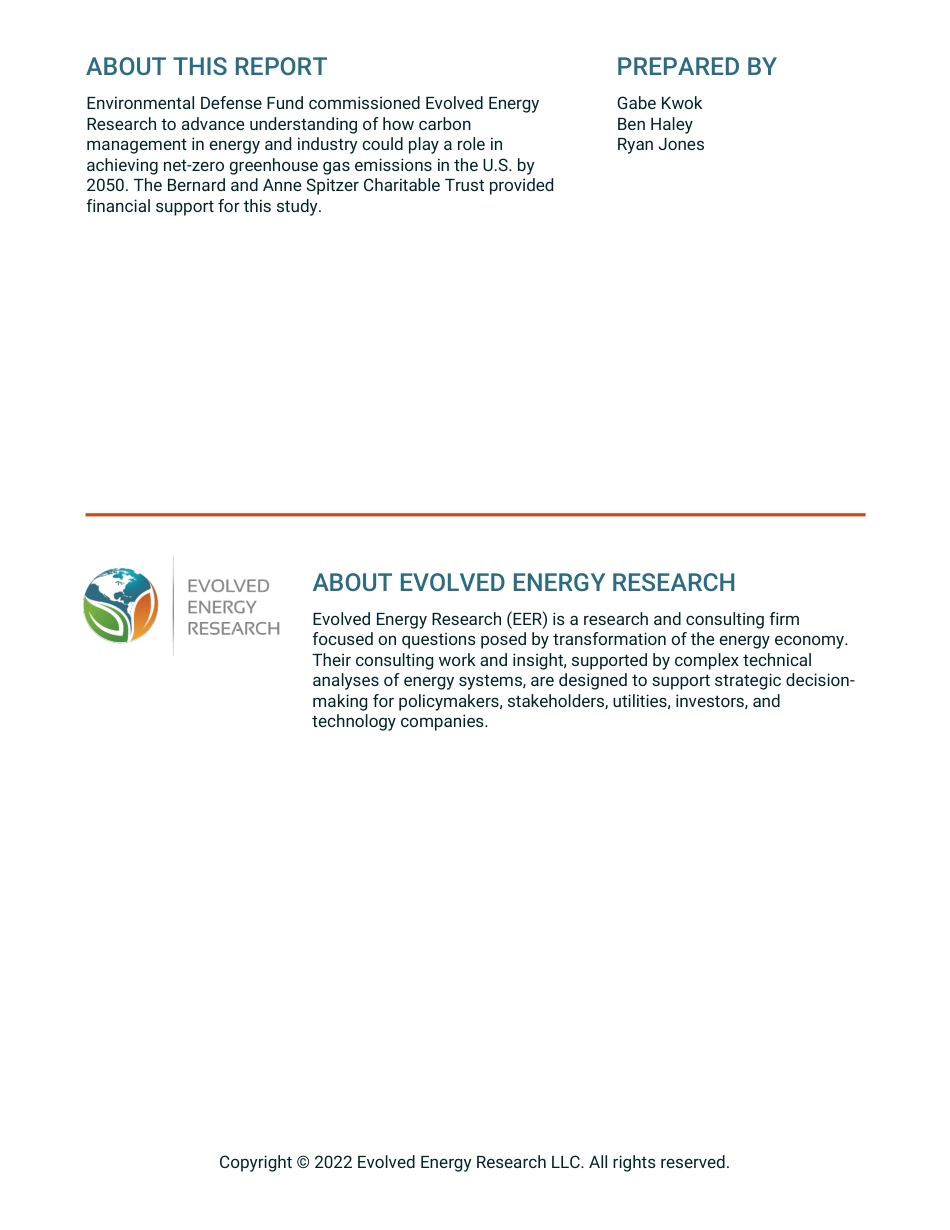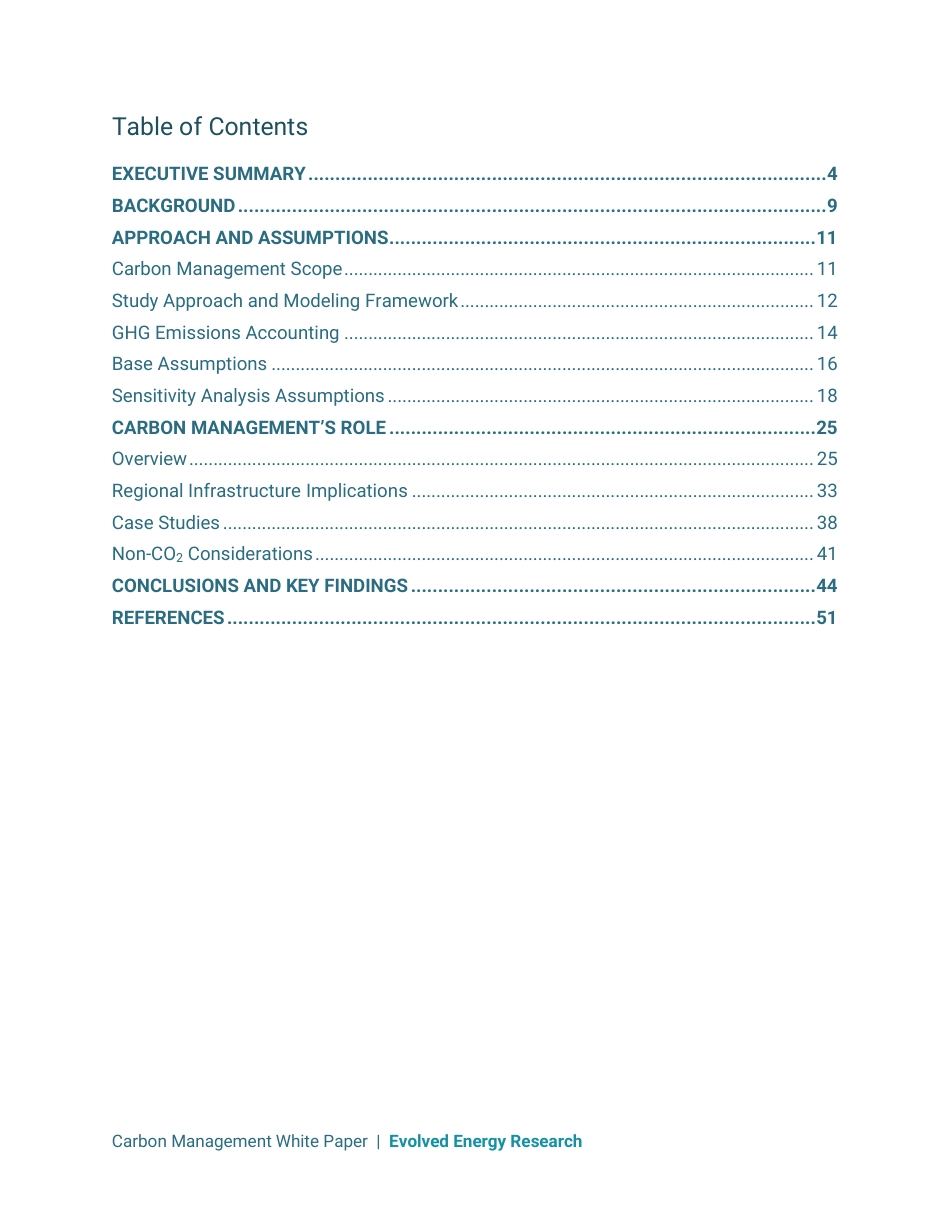MARCH 2022 Carbon Management in Net-Zero Energy Systems White Paper PREPARED BY Gabe Kwok Ben Haley Ryan Jones Copyright © 2022 Evolved Energy Research LLC. All rights reserved. ABOUT THIS REPORT Environmental Defense Fund commissioned Evolved Energy Research to advance understanding of how carbon management in energy and industry could play a role in achieving net-zero greenhouse gas emissions in the U.S. by 2050. The Bernard and Anne Spitzer Charitable Trust provided financial support for this study. ABOUT EVOLVED ENERGY RESEARCH Evolved Energy Research (EER) is a research and consulting firm focused on questions posed by transformation of the energy economy. Their consulting work and insight, supported by complex technical analyses of energy systems, are designed to support strategic decision-making for policymakers, stakeholders, utilities, investors, and technology companies. Carbon Management White Paper | Evolved Energy Research Table of Contents EXECUTIVE SUMMARY ................................................................................................ 4 BACKGROUND ............................................................................................................. 9 APPROACH AND ASSUMPTIONS ............................................................................... 11 Carbon Management Scope ................................................................................................. 11 Study Approach and Modeling Framework ......................................................................... 12 GHG Emissions Accounting ................................................................................................. 14 Base Assumptions ................................................................................................................ 16 Sensitivi...



